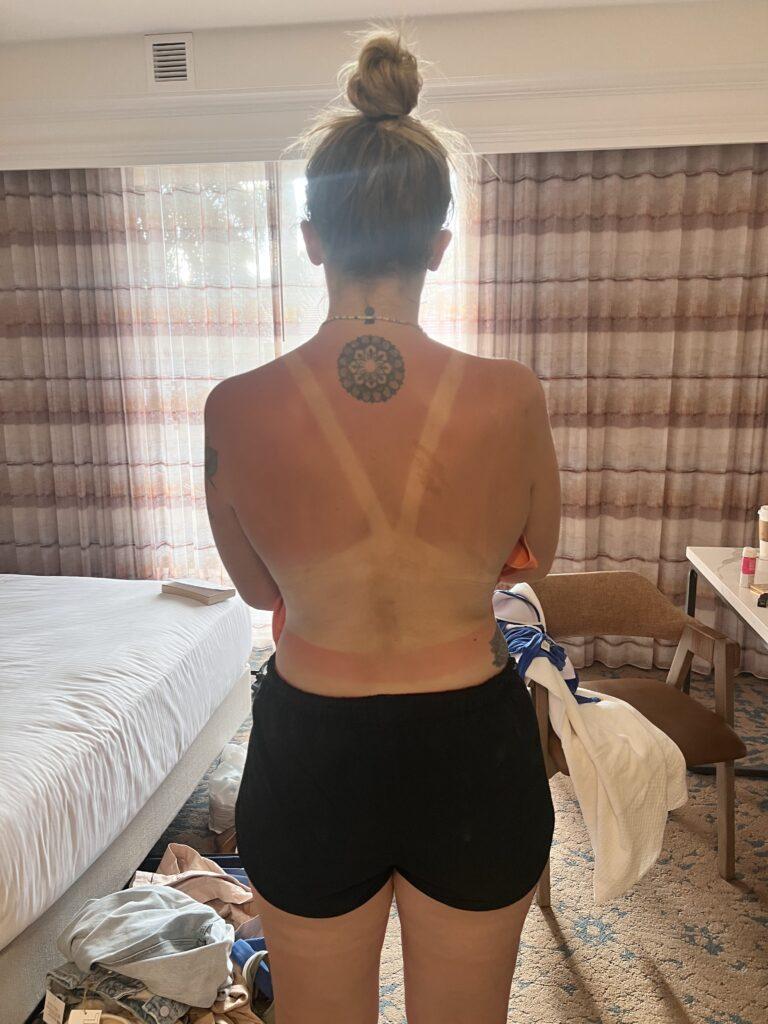As much as we all love a good summer tan, the truth is that the sun can do serious sun damage to our skin. The UV rays from the sun can cause premature aging, wrinkles, and even skin cancer. But what exactly happens to our skin when we spend too much time in the sun, and how can we heal it after the fact? In this article, we’ll dive into the science behind sun damage and offer tips for repairing and protecting your skin.

The Science of Sun Damage
When we expose our skin to the sun, the UV rays penetrate the skin and cause damage on a cellular level. Over time, this damage can lead to premature aging and wrinkles, as well as an increased risk of skin cancer. Specifically, the UV rays can break down collagen and elastin, two proteins that keep our skin looking youthful and firm. When these proteins are damaged, our skin can become loose and saggy, and we may develop fine lines and wrinkles.
UV rays can also cause damage to our DNA, which can lead to mutations and ultimately increase the risk of skin cancer. In fact, skin cancer is the most common form of cancer in the United States, and the majority of cases are caused by UV radiation from the sun.
How to Prevent Sun Damage
Preventing sun damage is the best way to protect your skin and prevent premature aging and skin cancer. Here are some tips for staying safe in the sun:
- Wear sunscreen: Always wear a broad-spectrum sunscreen with an SPF of at least 30. Reapply every two hours, or more often if you’re swimming or sweating.
- Seek shade: When possible, stay in the shade, especially during peak sun hours between 10am and 4pm.
- Wear protective clothing: Wear clothing that covers your skin, such as long-sleeved shirts, pants, and hats.
- Avoid tanning beds: Tanning beds are just as damaging to your skin as the sun, so avoid them at all costs.
How to Heal Sun-Damaged Skin
If you’ve already spent too much time in the sun and are dealing with sun-damaged skin, there are steps you can take to heal and repair your skin. Here are some tips for restoring your skin’s health:
- Use aloe vera: Aloe vera is a natural anti-inflammatory that can help soothe and heal sunburned skin. Apply it liberally to affected areas and let it absorb into the skin.
- Apply a vitamin C serum: Vitamin C is a powerful antioxidant that can help reverse some of the damage caused by UV rays. Look for a serum that contains at least 10% vitamin C and apply it daily.
- Consider laser therapy: Laser therapy can help reduce the appearance of fine lines and wrinkles, as well as sun spots and other discoloration caused by sun damage. Talk to your dermatologist about whether laser therapy is right for you.
- Stay hydrated: Drinking plenty of water can help your skin heal from sun damage and prevent further damage. Aim to drink at least 8 glasses of water per day.
- Use retinoids: Retinoids are a type of vitamin A that can help improve the appearance of fine lines and wrinkles, as well as sun damage. Talk to your dermatologist about whether retinoids are right for you.
In conclusion, tanning may be a tempting way to achieve a sun-kissed glow, but the long-term effects of sun damage can be serious. By protecting your skin from the sun and taking steps to heal and repair sun-damaged skin, you can keep your skin looking youthful and healthy for years to come. Remember to always wear sunscreen, seek shade, and wear protective clothing when you’re outside, and avoid tanning beds at all costs. If you do end up with sun-damaged skin, try using aloe vera, a vitamin C serum, or retinoids to help heal and restore your skin’s health. And if you’re dealing with more severe sun damage, laser therapy may be an option worth exploring with your dermatologist. By taking these steps, you can enjoy the summer sun while keeping your skin healthy and protected.
Sources:
- American Academy of Dermatology. (n.d.). Wrinkles & sun damage can be treated. Retrieved from https://www.aad.org/public/everyday-care/sun-protection/sun-damage-skin/wrinkles-sun-damage-can-be-treated
- American Academy of Dermatology. (2019, May 23). Prevent premature skin aging. Retrieved from https://www.aad.org/news/prevent-premature-skin-aging
- American Society for Dermatologic Surgery. (n.d.). Laser therapy for sun-damaged skin. Retrieved from https://www.asds.net/skin-experts/skin-treatments/laser-light-therapy/laser-therapy-for-sun-damaged-skin
- Cleveland Clinic. (2021, March 25). Sun damage: Protecting yourself. Retrieved from https://my.clevelandclinic.org/health/articles/5240-sun-damage-protecting-yourself
- Mehta, P. (2015). Sun damage and skin aging. Retrieved from https://www.ncbi.nlm.nih.gov/pmc/articles/PMC3583892/
- National Institutes of Health. (2014). Vitamin C and skin health. Retrieved from https://www.ncbi.nlm.nih.gov/pmc/articles/PMC5579659/
- National Institutes of Health. (2014). Retinoids in the treatment of skin aging: An overview of clinical efficacy and safety. Retrieved from https://www.ncbi.nlm.nih.gov/pmc/articles/PMC2699641/
- Rochester Regional Health. (n.d.). Sunburn and sun poisoning. Retrieved from https://www.urmc.rochester.edu/encyclopedia/content.aspx?ContentTypeID=85&ContentID=P00323
- Scripps Health. (2021). How to reverse sun-damaged skin. Retrieved from https://www.scripps.org/news_items/4349-how-to-reverse-sun-damaged-skin
- Stanford Medicine. (2020, February 12). Industry-linked studies more favorable to indoor tanning. Retrieved from https://med.stanford.edu/news/all-news/2020/02/industry-linked-studies-more-favorable-to-indoor-tanning.html

